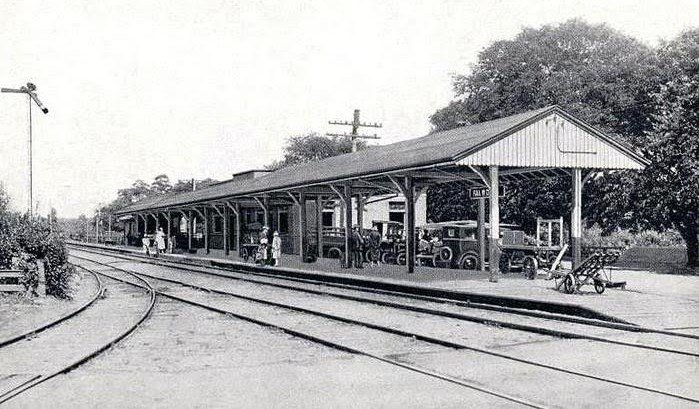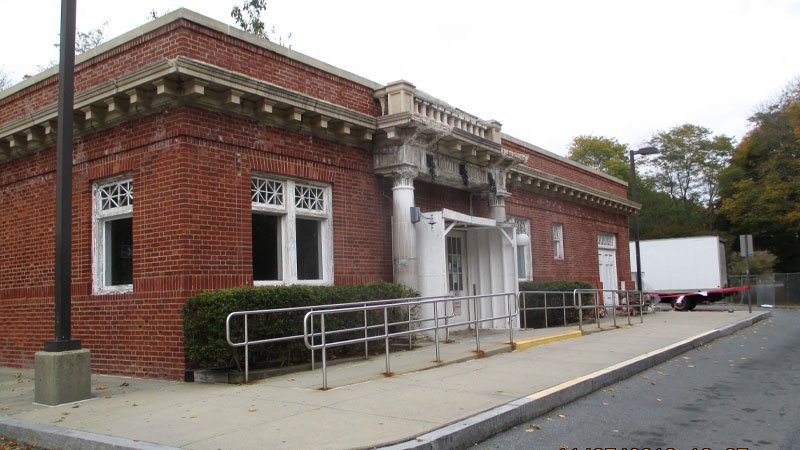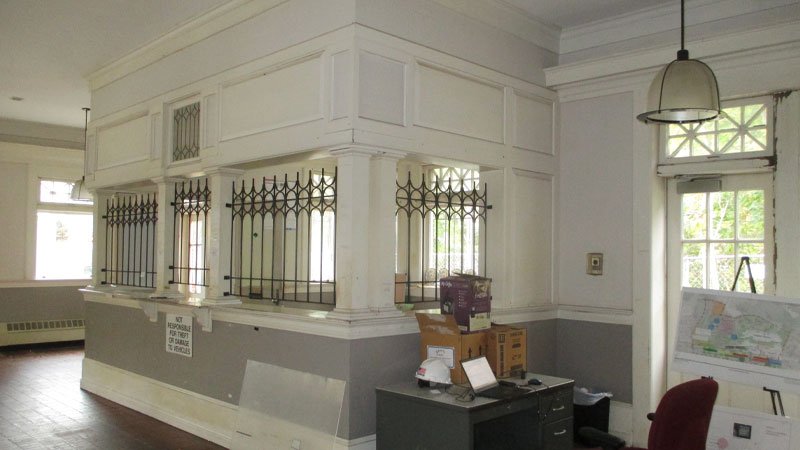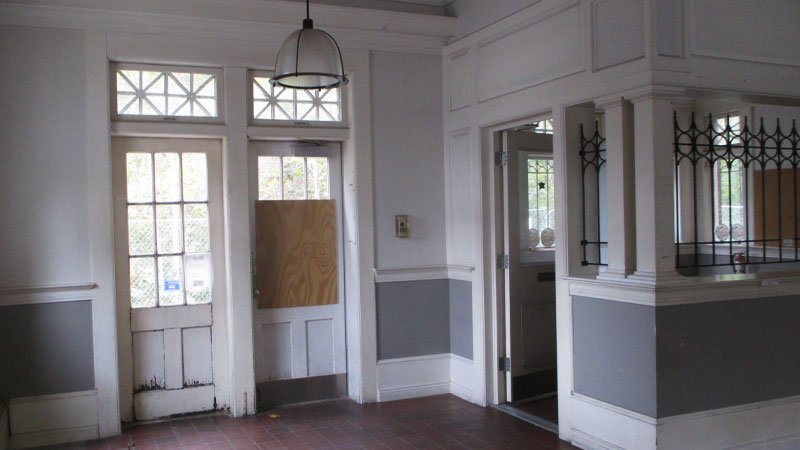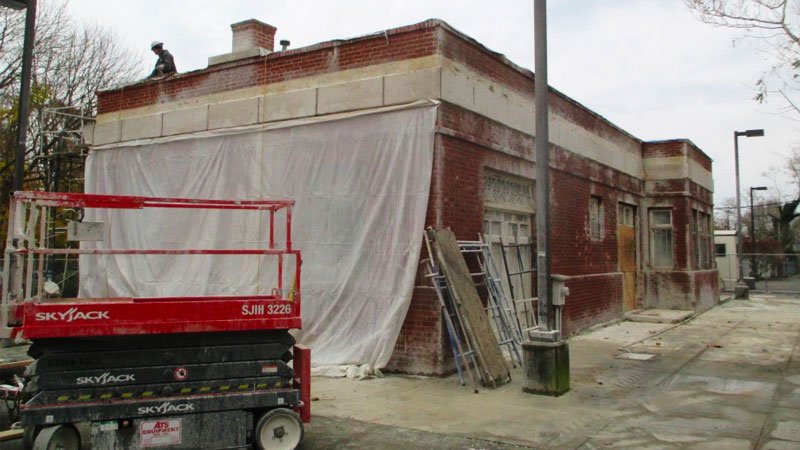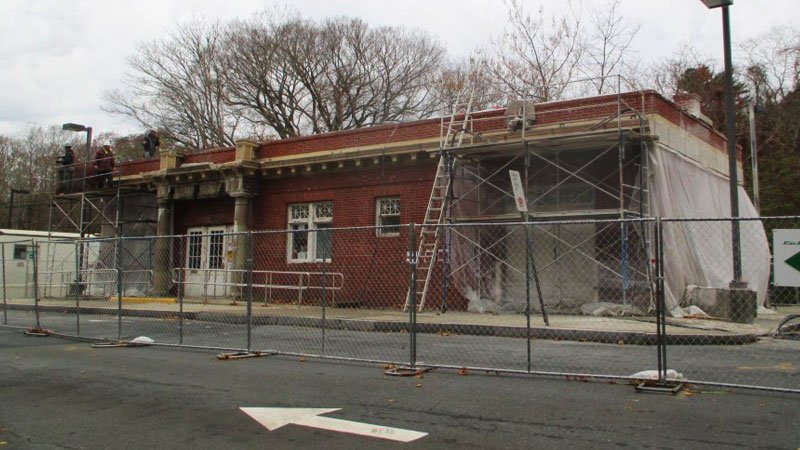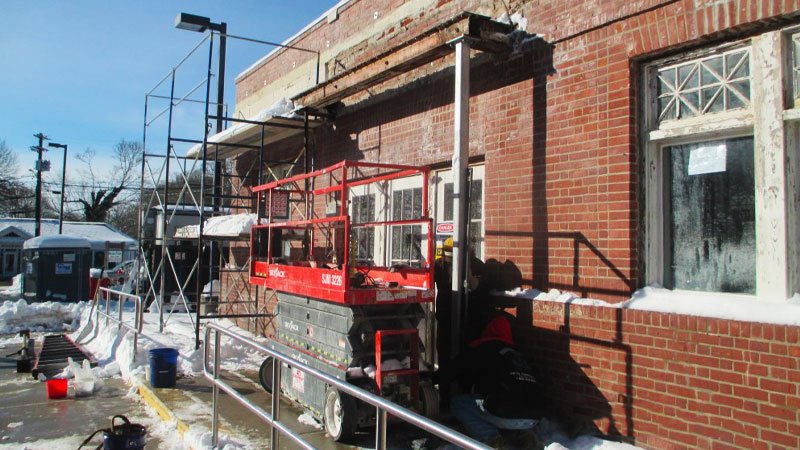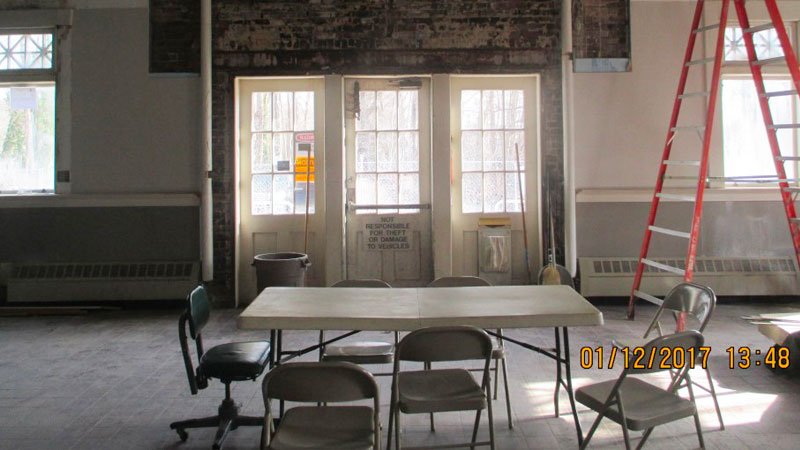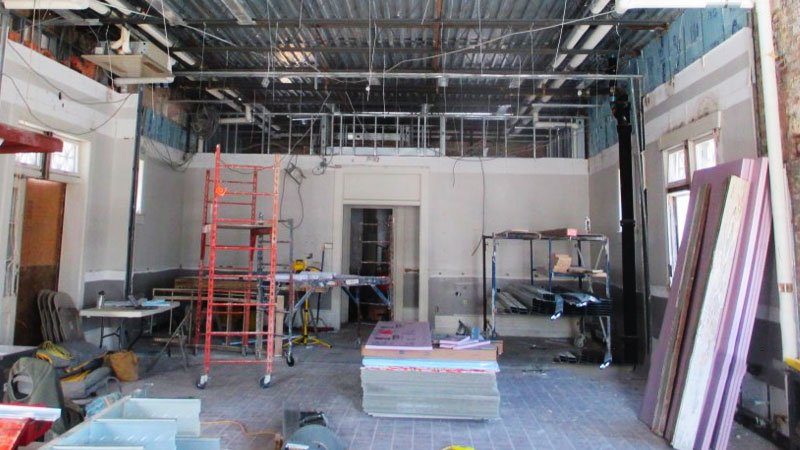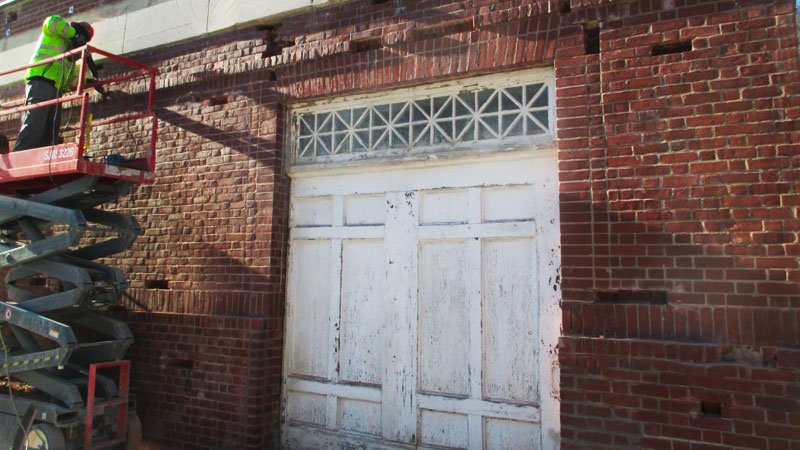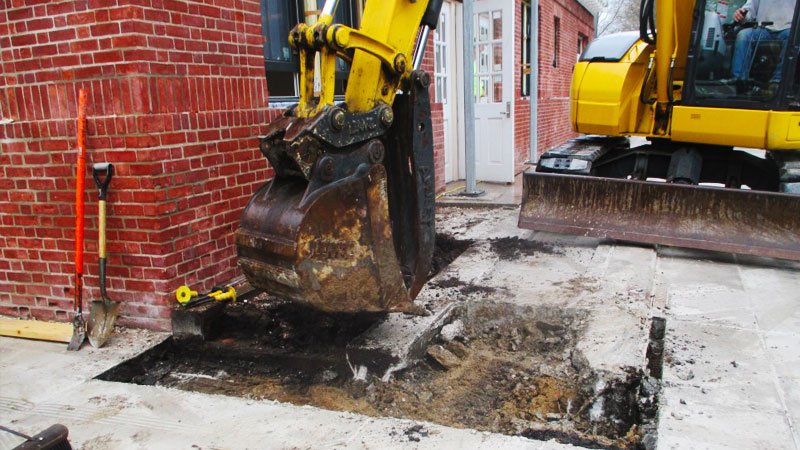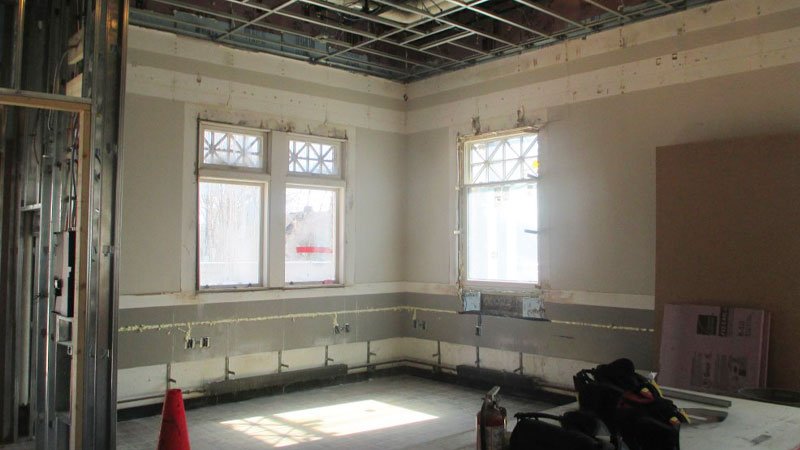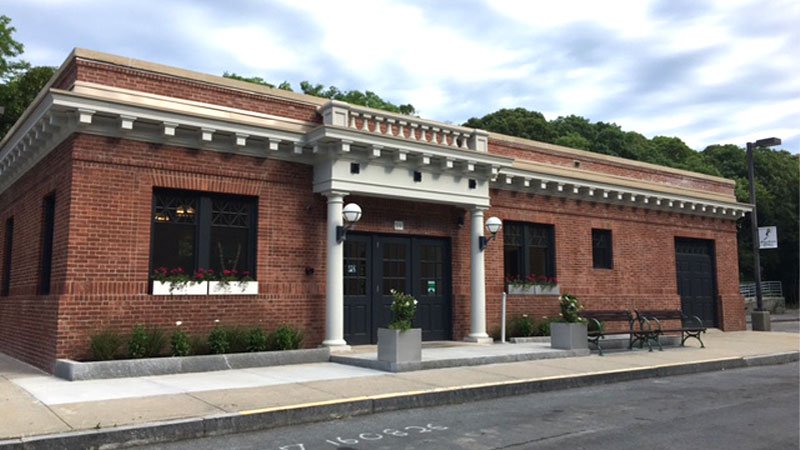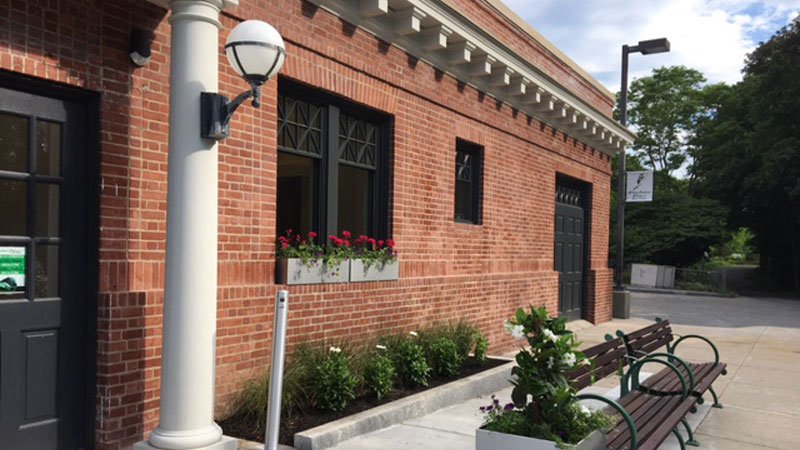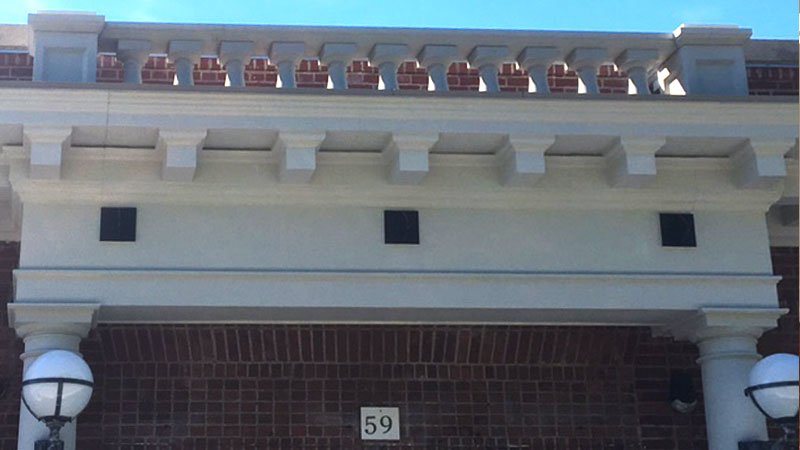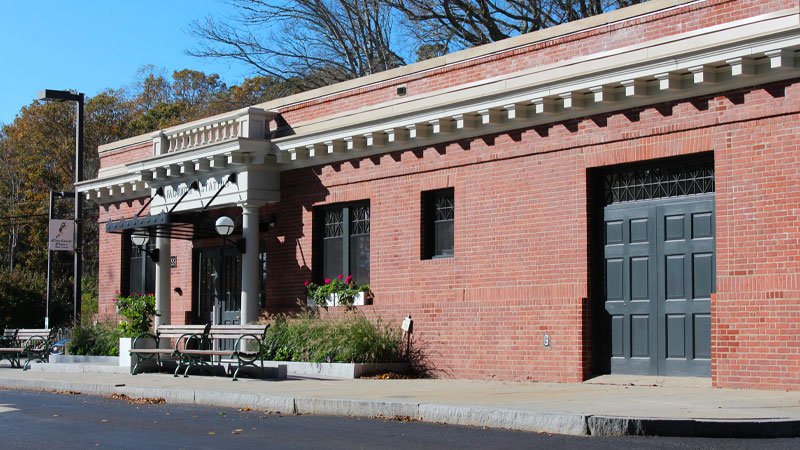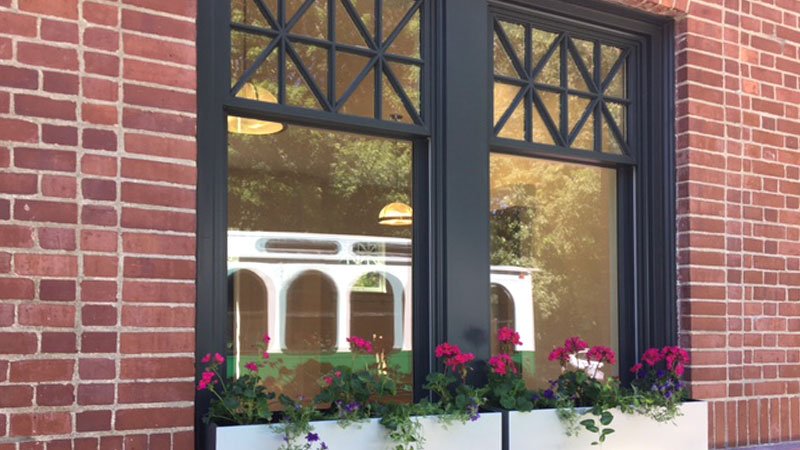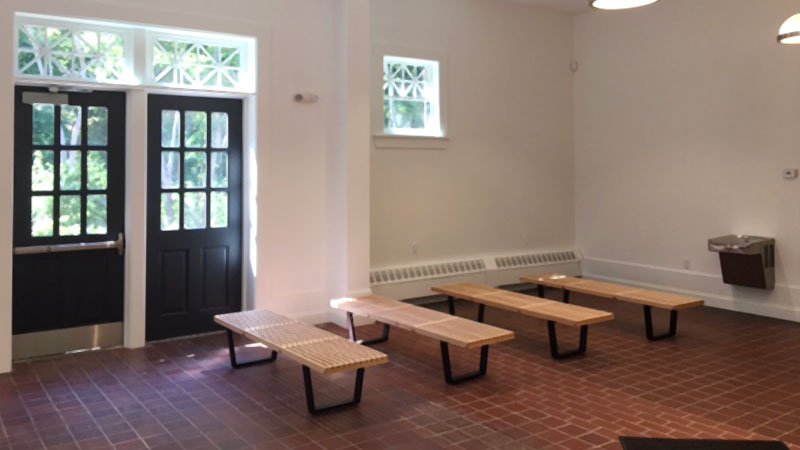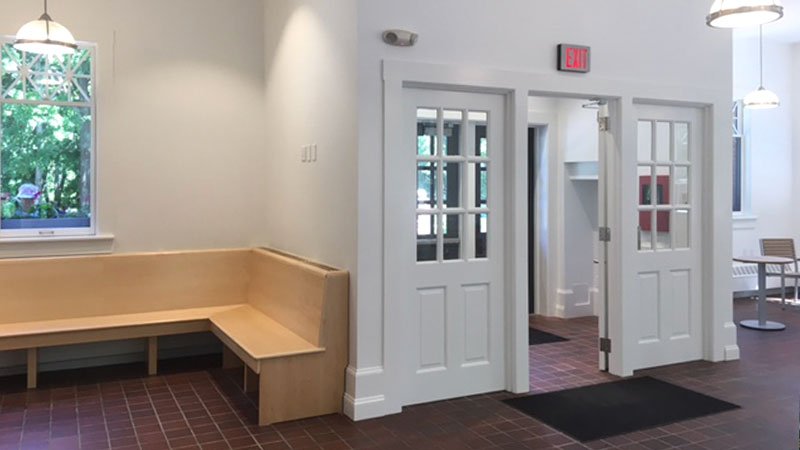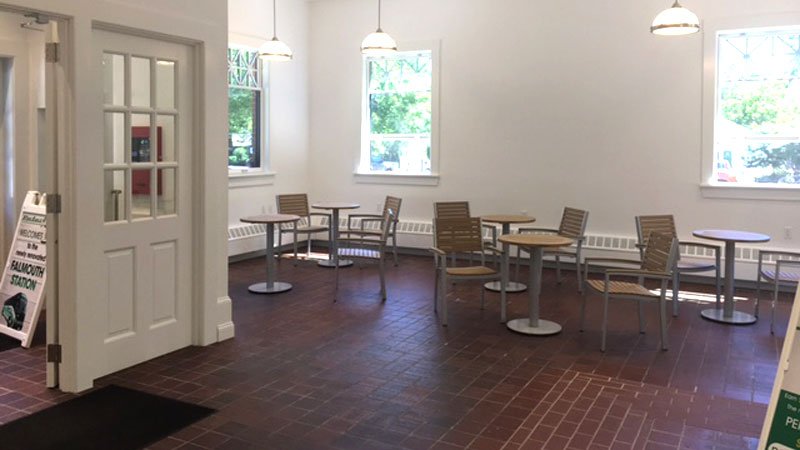Falmouth Station Restoration Timeline
1872
Falmouth Railroad Station was placed in service in July 1872 when the Old Colony Railroad inaugurated service on the Woods Hole Branch. At one time, the Falmouth Station was one of the busiest railroad Stations on Cape Cod. It was nearly bypassed as some objected to the cost and wanted the branch to follow Buzzards Bay - from W. Falmouth to Woods Hole.
1880
The 1880 map of the Falmouth Station area. The freight house was originally located southwest of the main Station facility and the Depot Avenue crossing.
1908
The original Station, a wooden structure remained as it was built until the early 20th century. In 1908 the New York, New Haven & Hartford Railroad Company added platformed canopies extending north and south, to offer patrons some shelter to the varied New England weather conditions. However, the heavy passenger usage of the Falmouth Station called for greater investment.
1912
The New York, New Haven & Hartford Railroad Company, who moved the wood depot across the tracks to make room for a brand new Station. In its place, beginning in May 1912, the New Haven Railroad built a replacement brick depot which stands to this day. The old wooden Station was demolished upon the new building completion, however freight facilities were added to accommodate the many Falmouth commercial businesses that transported their commodities across the State and Nation.
Falmouth Enterprise Article - January 25, 1913
The new railroad station in Falmouth has been accepted by the officials of the New York, New Haven & Hartford Railroad Company, and in all probability will be placed in commission during the coming week. Station Agent O.W. Tompkins could not state definitely, but intimated that possibly the new station might be occupied Sunday for the first time.
The residents of Falmouth may justly feel proud of this latest addition to the new buildings of the town, while summer visitors returning to their villas at this popular seashore resort will find a pleasant surprise awaiting them in the comfort and convenience afforded by the new structure.
Externally the building is unusually attractive. It is built of brick with a cornice and trimmings of artificial stone, closely resembling Indiana limestone. As will be seen by the picture, the style of architecture is distinctly different from any other depot on the road.
The new station is 69 feet, 8 inches, in length and is 25 feet wide. The main waiting room is 41 feet, 2 inches long by 25 wide. The ticket office is larger than usual, being 13 feet, 6 inches by 12 feet, 8 inches. Opening off the waiting room are two toilets, equipped with modern facilities. The waiting room is furnished with comfortable hardwood seats of mission design. The seats and woodwork of the room are stained a tobacco brown; the walls are painted a yellowish green, the wainscoting being a beautiful dark green, and the
arched ceiling a pure white. The floor of both the ticket office and waiting room is of red promenade tile. An up-to- date sanitary drinking fountain has been installed in the Waiting room. The building is brilliantly lighted throughout by electricity, and the platforms are also well lighted. The switch-board for the lighting system is located in the ticket office, and also the levers for operating the semaphore across the track from the station. At the northern end of the building is the baggage room, 21x25 ft. The station is heated by a Gurney hot water heater, located in the basement under the baggage room.
The most ornate feature of the building is the front entrance. The two pillars are of artificial stone and support an ornamental balustrade of the same material. Suspended from iron chains is a marquee or canopy, with glass roof. The words “Falmouth Station” is cut into the stone over the main entrance. On the track side there are two entrances to the waiting room, while on the front are three swinging doors, all of them opening outward.
The station is surrounded by a granolithic platform which is 17 feet, 8 inches wide on the railroad side, and eight feet wide around the building with the exception of the front entrance where it widens to eleven feet. The station was built by the Eastern Construction Company of Woonsocket, R.I., D.R. Howard, president. The work was done in a thoroughly workmanship manner under the personal supervision of Frank E. Champlin who has had large experience in construction work.
The new station is an ornament to Falmouth—a town noted for its fine buildings.
1935
During the Great Depression, on May 21, 1935 the New York, New Haven & Hartford Company’s brand new train the “Comet” stopped at the Falmouth Station during its introduction tour and before starting service between Boston and Providence. Within a 2 hour time period 1,866 people viewed and entered the train; many of them families and teachers with their students.
1939
After a heavy winter snow storm on March 12, 1939, the metal and glass marquee over the front door of the Falmouth Station collapsed under the weight of the snow.
1940 - 1944
The Falmouth Station was a very busy place during WW2, with many newspaper articles detailing the activities there. In addition to all the men leaving for war on trains from Falmouth, in October 1940 the 211th Coast Artillery Regiment was working there converting baggage cars into Army travelling kitchens in the Falmouth Freight Yard. Two of the Falmouth cars transported the 211th from Camp Edwards to Camp Hulen, TX. Another article in April 1942 noted a black out drill that was not successful because of a lamp that was left on in the Falmouth Station’s ticket office. Oops! And an article in August 1943 told a story about the Women Taxi Drivers competing for fares at the Falmouth Station.
1953
Due to their deteriorated state and the the expense of maintaining them, in the spring of 1953 the platform canopies built in 1908 were removed by the Railroad. The contractor also replaced the wooden platform on the north side of the Falmouth Station with a new concrete and asphalt one that extended toward the Freight House.
1964 - 1988
The New York, New Haven & Hartford passenger trains stopped running on the Cape Cod - Woods Hole branch in September 1964, however, the Falmouth Station remained open, serving bus passengers. The State purchased the Falmouth Station in the 1970s.
In the 1980s, the Cape Cod & Hyannis Railroad starting offering tourist and passenger service, and for a couple of years offered service to Falmouth. By this time, the rail line between Falmouth and Woods Hole had been lifted, and the first segment of the Shining Sea Bikeway had been built.
1989
In 1989, the State funded a $1 million restoration of the station building and platform, including construction of a high-level platform. The renovated Falmouth Railroad Station, however, would never see a regularly scheduled passenger train, as the CC&H ended service following the 1988 season after the state had cut support during the recession of the late 1980s. Rail service ended in 1989 and the former Falmouth Railroad Station was renamed as the Falmouth Station. Since then, it has been used as a bus depot by the Cape Cod Regional Transit Authority, Peter Pan Bus Lines and the Plymouth & Brockton Street Railway.
2009
A 7.4-mile section of the rail line that once carried trains to the station was converted to a bike path, extending the Shining Sea Bikeway from Woods Hole to North Falmouth for a total of 10.7 miles. The Falmouth Station is located next to the bikeway near the 3.5 mile marker, and is a favorite stopping place for the bikeway users to rest, use the restrooms or have a snack.
Falmouth Station Before & During Renovation
2015
in 2015 the Falmouth EDIC acquired a 99-year lease from Massachusetts Department of Transportation for the Falmouth Station property. The State provided a $1.4M grant to renovate the Station and in conjunction with additional funds contributed by the Falmouth EDIC, renovation began in 2016. This project was a major renovation of the interior and exterior of the facility and the parking area. The interior space was reconfigured to ensure better use of the space as well as adding new wiring, bathroom facilities, windows, insulation, roof, brick replacement or repair and a new security alarm system - among many other improvements. The Falmouth EDIC is proud of their work regarding the renovation and management of the historic Falmouth Station and is delighted that it is now again a thriving community public facility servicing the transportation needs of Falmouth as well other local Cape Cod residents and tourists.
Falmouth Station After Renovation
Current and Ongoing Improvements
The Falmouth Station, like any public building requires much attention and maintenance. Since the completion of the Falmouth EDIC renovation in 2017 we have continued to improve upon the facility by later adding air-conditioning, upgrading the facility security by the addition of security cameras and auto locking doors, enhanced landscaping, repainted both the interior and exterior, replaced signing, and added energy efficient bulbs to all outside lighting, among other improvement activities. Currently, the Falmouth EDIC is having the masonry repaired on the very weathered south end of the historic Falmouth Station. We are very thankful that the $248,136.00 project is being funded by the Falmouth Community Preservation Committee. An the maintenance of this beautiful building continues…..
We would be remiss not to mention that Paul Dreyer added an informative historical artwork section within the building, and the Monday Morning Painters from the Falmouth Art Center provided local artwork which is displayed throughout the building. We thank these people for so generously donating these items to make the Falmouth Station a beautiful place to visit.
Donations are greatly appreciated by anyone who may wish to contribute to the ongoing maintenance and improvement of this wonderful public facility.
Development Team
Developer: Falmouth EDIC
Architect: Beacon Architectural Associates
General Contractor: A.P. Whitaker & Sons, Inc.
Clerk of the Works: The Vertex Companies, Inc.
Site/Civil Engineer: Holmes & McGrath, Inc.
Landscape Architect: Studio 2112 Landscape Architecture
Falmouth Station Location
79 Depot Avenue
Falmouth, MA 02540
Please Tell Us What You Think About the Falmouth Station by Taking Our Survey



